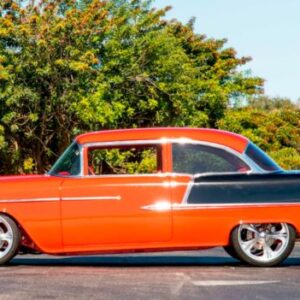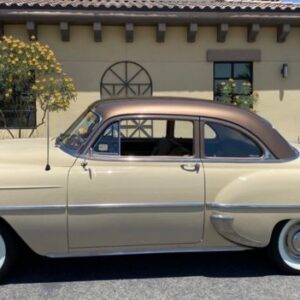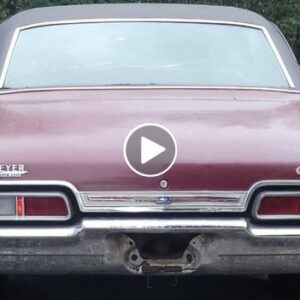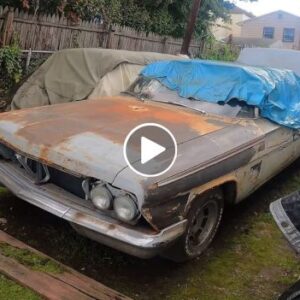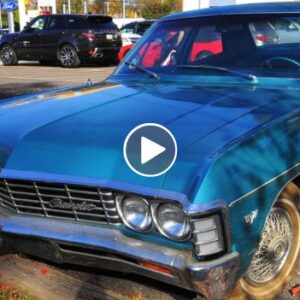The 1940 Ford Coupe is an iconic American automobile that has stood the test of time. It is a symbol of the golden age of car design, embodying the perfect blend of style, performance, and innovation. This classic car is a true testament to the ingenuity and craftsmanship of the era, and its influence has been felt by successive generations of automotive enthusiasts. Let’s take a closer look at the history, design, and features of this extraordinary machine.
-1687060512.jpg)
1. Historical Context
The late 1930s and early 1940s were a time of significant change in the United States. As the nation began to emerge from the Great Depression, the automotive industry was on the cusp of a new era. World War II was looming on the horizon, and manufacturers were racing to improve their offerings in the face of increasing competition.
-1687060573x1024.jpg)
Ford Motor Company, under the leadership of Henry Ford’s son Edsel Ford, was eager to make a mark in this challenging landscape. With the introduction of the 1940 Ford Coupe, the company aimed to capture the hearts and minds of American consumers with a stylish, high-performance vehicle.
2. Design and Styling
The 1940 Ford Coupe is a classic car that features a distinct and iconic design from the 1940s. Here is a description of its design elements:
Exterior
Body Style
The 1940 Ford Coupe had a sleek and streamlined body style that was popular during that era. It had a two-door configuration with a fixed roof and a separate trunk at the rear.
Grille and Headlights
The front of the car showcased a prominent chrome grille with horizontal bars that stretched across the width of the car. The grille was flanked by two large round headlights on either side, giving the car a bold and distinctive look.
-1687060610.jpg)
Fenders
The fenders of the 1940 Ford Coupe were pronounced and rounded, seamlessly blending with the overall body design. The front fenders extended forward, giving the car a muscular appearance.
Hood
The hood was long and sleek, featuring a central ridge that added to the car’s aesthetic appeal. It sloped downward towards the grille, creating a streamlined and aerodynamic look.
Windows
The 1940 Ford Coupe had large windows, providing excellent visibility for the driver and passengers. The windshield was curved and had a split design, with a vertical center post that divided it into two sections.
Rear Design
The rear of the car had a rounded trunk with integrated taillights positioned vertically at the outer edges. The trunk had a streamlined shape, flowing smoothly into the body, creating a harmonious design.
Chrome Accents
The 1940 Ford Coupe featured chrome accents on various parts of the car, including the grille, bumpers, door handles, and window trim. These chrome details added a touch of elegance and sophistication to the overall design.
Wheel Design
The car typically came with steel wheels and chrome hubcaps, which were a popular choice at the time. Some models also featured white-wall tires, further enhancing the classic look.
Overall, the 1940 Ford Coupe had a timeless design that combined elegant curves with a hint of aggression. Its sleek lines and distinctive features made it a beloved and sought-after car among automotive enthusiasts.
Interior
The 1940 Ford Coupe had an interior design that reflected the style and comfort of the era. Here are some key features of its interior design:
Seating
The 1940 Ford Coupe typically accommodated two passengers in a cozy and comfortable cabin. The seats were well-padded and upholstered in cloth or vinyl, providing a comfortable seating experience.
Dashboard
The dashboard of the 1940 Ford Coupe had a clean and functional layout. It featured a centrally mounted instrument cluster with speedometer and gauges for various vehicle functions, such as fuel level and engine temperature. The dashboard also had control knobs and switches for lighting, heating, and ventilation.
Steering Wheel
The steering wheel was typically made of Bakelite or wood and had a simple yet elegant design. It provided a comfortable grip and featured a prominent center horn button.
-1687060840.jpg)
Upholstery and Trim: The interior upholstery and trim of the 1940 Ford Coupe were often finished in materials like cloth or vinyl, with color options to match the exterior paint. The door panels and seats were tastefully upholstered, reflecting the style and craftsmanship of the time.
Accessories
Optional accessories could be added to enhance the interior of the 1940 Ford Coupe. These included features like an AM radio, heater/defroster, and clock.
Headroom and Legroom
The 1940 Ford Coupe had a relatively compact cabin, providing sufficient headroom and legroom for the driver and passenger. However, it is worth noting that the Coupe body style had a slightly smaller cabin space compared to other body styles, such as sedans.
The interior design of the 1940 Ford Coupe aimed to provide a comfortable and stylish environment for its occupants, reflecting the attention to detail and craftsmanship of that era.
3. Engine
The 1940 Ford Coupe was available with several engine options, depending on the specific model and trim level. Here are the most common engines found in the 1940 Ford Coupe:
Flathead V8 Engine
The most popular and iconic engine choice for the 1940 Ford Coupe was the Flathead V8 engine. It was a 3.6-liter (221 cubic inch) V8 engine. This engine was known for its durability and smooth power delivery, making it a favorite among hot rodders and enthusiasts.
-1687060641x1024.jpg)
Inline 6-Cylinder Engine
Some models of the 1940 Ford Coupe were equipped with an inline 6-cylinder engine. The specific displacement varied, but common options included a 3.6-liter (221 cubic inch) inline 6-cylinder engine or a 3.9-liter (239 cubic inch) inline 6-cylinder engine.
Other Engine Options
In addition to the V8 and inline 6-cylinder engines, there were a few other engine choices available for the 1940 Ford Coupe, although they were less common. These options included a 2.2-liter (136 cubic inch) V8 engine, a 3.6-liter (221 cubic inch) V8 engine with higher compression, and a 2.8-liter (170 cubic inch) inline 6-cylinder engine.
-1687060858.jpg)
The 1940 Ford Coupe could be customized and modified by individual owners or hot rodders over the years. As a result, some cars may have different engines or performance enhancements depending on the modifications made by their owners.
4. Performance
The performance of the 1940 Ford Coupe varied depending on the specific engine and configuration. Here are some general performance characteristics of the 1940 Ford Coupe:
Acceleration
The acceleration of the 1940 Ford Coupe was respectable for its time. The V8 engine variants, especially the Flathead V8, provided decent low-end torque and smooth power delivery. However, it’s important to note that the acceleration and overall speed capabilities of the 1940 Ford Coupe were not as high as modern cars.
Top Speed
The top speed of the 1940 Ford Coupe varied based on the engine and gearing. On average, it could reach speeds of around 85 to 100 mph (137 to 161 km/h) depending on the specific model and engine configuration.
Handling
The handling characteristics of the 1940 Ford Coupe were considered satisfactory for its era. However, by modern standards, it would feel less precise and have a softer suspension setup. The car’s size, weight, and suspension design were more focused on providing a comfortable and smooth ride rather than aggressive cornering capabilities.
-1687060888.jpg)
Braking
The braking system in the 1940 Ford Coupe was hydraulic drum brakes, which were standard for that time. While they were effective for normal driving conditions, the braking performance might feel less responsive compared to modern disc brake systems.
Fuel Efficiency
The fuel efficiency of the 1940 Ford Coupe varied depending on the engine and driving conditions. On average, it achieved around 12-15 miles per gallon (4.8-6.4 km/l), which is considerably lower than today’s fuel-efficient cars.
-1687061034.jpg)
These performance characteristics are based on the stock configuration of the 1940 Ford Coupe. Over the years, many of these cars have been modified or restored, and their performance may have been enhanced through engine swaps, suspension upgrades, and other modifications made by individual owners or enthusiasts.
5. Market Reception of the 1940 Ford Coupe
The 1940 Ford Coupe was well-received by the American market when it was first introduced. Its combination of innovative design, performance, and affordability made it a popular choice for consumers at the time. The car’s success can be attributed to several factors that resonated with the public, including its overall aesthetics, performance capabilities, and the reputation of the Ford Motor Company.
Aesthetics and Design
The 1940 Ford Coupe’s striking design, with its streamlined shape and sleek lines, set it apart from other cars of the era. Consumers were drawn to the car’s modern and sophisticated appearance, which was a departure from the more conservative styles that had previously dominated the industry. The wide grille, integrated headlights, and teardrop-shaped taillights became iconic features of the car, contributing to its popularity among buyers who appreciated its unique aesthetic.
Performance and Affordability
The 1940 Ford Coupe boasted a powerful flathead V8 engine that produced 85 horsepower, providing drivers with brisk acceleration and a top speed of around 80 miles per hour. Its performance capabilities were impressive for the time, especially considering the car’s relatively affordable price. The Coupe was available in both Standard and Deluxe models, offering consumers a choice between a more basic package and one with additional features and amenities.
Ford Motor Company’s Reputation
Ford Motor Company’s reputation for producing reliable, well-built vehicles also played a significant role in the market reception of the 1940 Ford Coupe. Founded by Henry Ford, the company had a long history of innovation and was known for its commitment to quality and value. This reputation helped to instill confidence in consumers, who saw the 1940 Ford Coupe as a dependable and well-engineered automobile.
-1687060923x1024.jpg)
Market Impact and Legacy
The 1940 Ford Coupe’s popularity was evident in its sales figures, which reached over 500,000 units for the 1940 model year across all body styles, including coupes, sedans, and convertibles. The car’s success contributed to Ford Motor Company’s continued growth and solidified its position as a leading American automaker.
The market reception of the 1940 Ford Coupe had a lasting impact on the automotive industry, as its design and performance influenced subsequent generations of vehicles. The Coupe’s popularity also played a significant role in the development of custom car culture and hot-rodding, as enthusiasts embraced the car’s potential for modification and personalization.
-1687060941x1024.jpg)
In summary, the market reception of the 1940 Ford Coupe was overwhelmingly positive. Its combination of style, performance, and affordability resonated with American consumers, contributing to its enduring legacy as an iconic and influential automobile.
6. Sales and Production
The 1940 Ford Coupe was a part of Ford’s overall lineup for the 1940 model year, which included various body styles such as coupes, sedans, convertibles, and station wagons. While specific sales and production numbers for the Coupe alone are difficult to pinpoint, we can look at the broader sales and production figures for Ford’s 1940 models.
In 1940, Ford Motor Company produced a total of approximately 541,896 vehicles across all body styles. This figure includes the Standard and Deluxe models of the 1940 Ford lineup. The sales figures for the 1940 models were quite successful, with Ford ranking third among American automakers in terms of production volume for that year. This success can be attributed to the appealing design, performance, and affordability of the 1940 Ford models, including the Coupe.
While it is challenging to provide the exact number of 1940 Ford Coupes produced and sold due to a lack of specific data, it is clear that the Coupe played a significant role in Ford’s overall success in 1940. The popularity of the 1940 Ford Coupe contributed to Ford’s growth, solidifying its position as a leading American automaker of the time.
7. Cultural Values
The 1940 Ford Coupe, with its distinctive design and performance capabilities, reflects several cultural values of the time and continues to embody certain timeless ideals. Here are some of the key cultural values associated with the 1940 Ford Coupe:
Innovation and Progress
The 1940 Ford Coupe was designed during a period of significant change and innovation in the automotive industry. Its streamlined, aerodynamic design and modern features represented a departure from the more conservative styles of the past, reflecting society’s growing interest in progress and embracing new ideas.
-1687060974.jpg)
Affordability and Accessibility
Ford Motor Company had a long-standing commitment to producing reliable, well-built vehicles that were affordable and accessible to the average consumer. The 1940 Ford Coupe, with its relatively low price, was a testament to this philosophy, reflecting the cultural value of providing quality and value to the masses.
Individualism and Personal Expression
The 1940 Ford Coupe became a favorite among hot-rodders and custom car enthusiasts who saw the potential for modification and personalization. The car’s popularity in the custom car culture of the time reflects the American value of individualism and the desire for personal expression through one’s possessions.
-1687060993x1024.jpg)
Nostalgia and Timelessness
The 1940 Ford Coupe’s enduring appeal and iconic status in American automotive history are indicative of the cultural value of nostalgia and the appreciation for timeless design. The car’s lasting influence on the custom car culture, automotive design, and popular culture demonstrates the desire to preserve and celebrate the past while also looking towards the future.
In conclusion, the 1940 Ford Coupe represents a range of cultural values that were important at the time of its creation and continue to resonate today. Its innovative design, affordability, performance capabilities, and enduring appeal reflect the spirit of progress, individualism, and nostalgia that are inherent in American culture.
